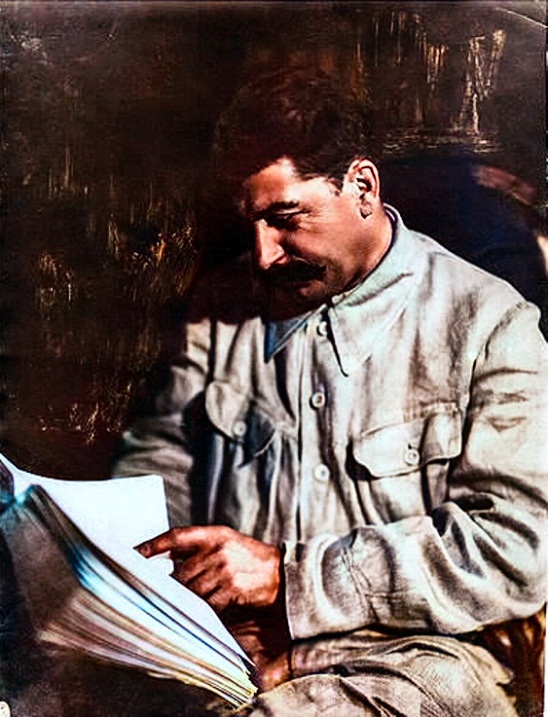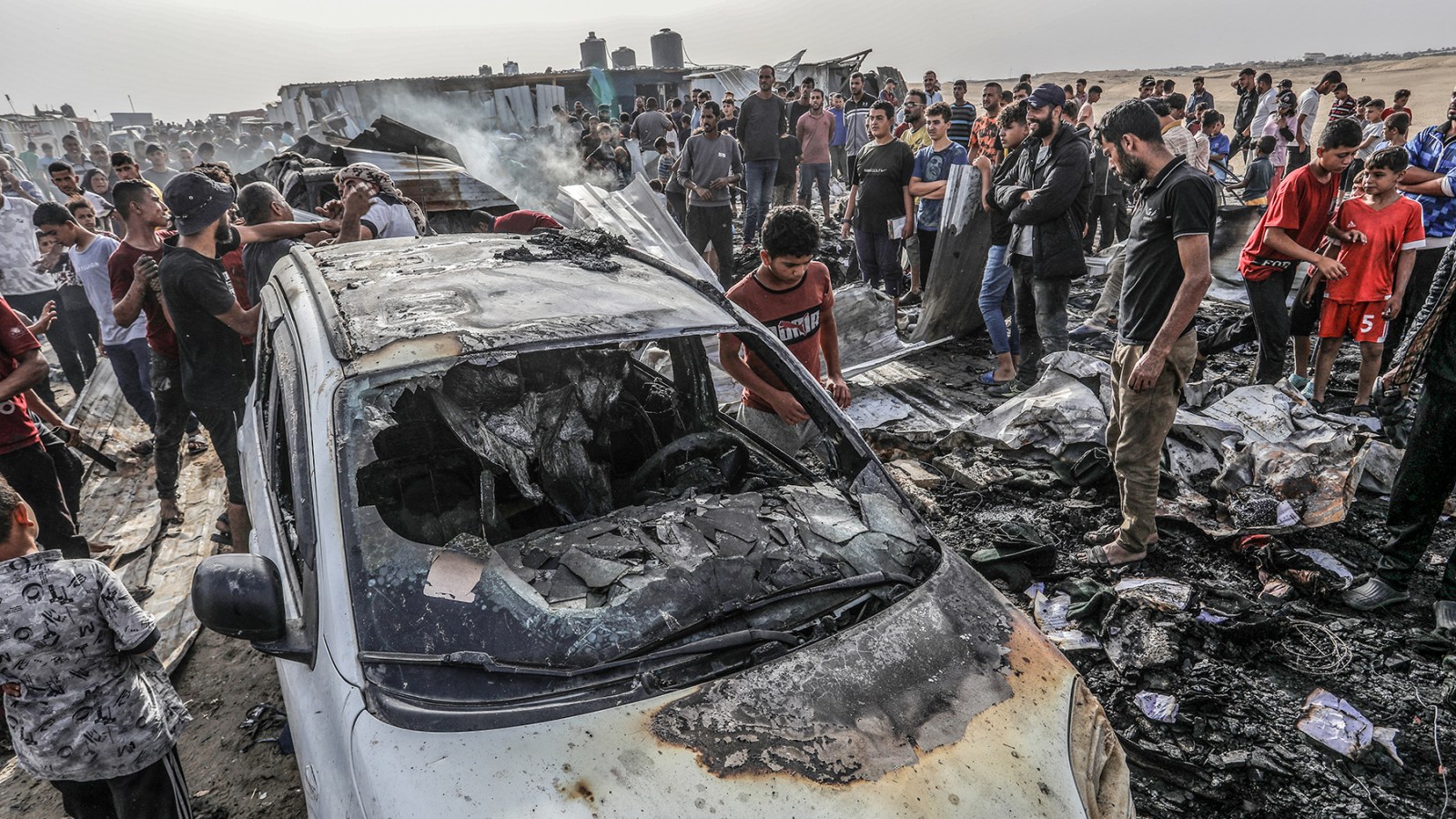For months, Palestinian civilians were told to evacuate their homes and head to Rafah, a tiny Southern city designated a “safe zone” by Israel, while Israel conducted an aggressive military campaign throughout the rest of Gaza. Israel’s effort to root out members of Hamas in the wake of its Oct. 7 attack has come at a staggering cost: 36,000 dead and counting, according to the Gaza Health Ministry.
In recent months, more than a million Palestinians, including 600,000 children, were pushed by Israel into makeshift shelters in the so-called “safe zone” in Southern Gaza. But on Sunday, and again on Tuesday, Israel conducted airstrikes in and around Rafah where internally-displaced Palestinians were sheltering, sparking a blaze that engulfed multiple tents.
The Israeli military said two senior Hamas leaders were among the 45 individuals killed in Sunday’s strike. Speaking to the Israeli Parliament on Monday, Prime Minister Benjamin Netanyahu called the fire and civilian casualties a “tragic mishap.”
James Elder is a spokesman for the United Nations Children’s Fund who has spent months trying to raise awareness about the dire conditions for children and families across Gaza. “They are physically spent, they’re psychologically exhausted, their coping capacity has been smashed, they are in some sort of overdrive in terms of ‘How do I get through this?’ And then, there’s a direct bombardment that turns into this inferno and, I mean, literally: It is hell on Earth,” says Elder.
Karin Huster is a French-American trauma nurse and medical coordinator for Doctors Without Borders in Gaza, which has been operating on the western side of Rafah since May 14. In a voice note shared with Rolling Stone, she described the situation at the Tal Al-Sultan Trauma Stabilization Point on Sunday after the first airstrike.
“We received, over the course of the night, over 180 patients, which we were able to stabilize and refer to the open field hospitals in the neighborhood,” Huster said. “Very, very sadly we also received 28 patients that were dead on arrival. Many of the bodies were burned beyond recognition.”
On Monday, Huster said, “military activities continued to intensify” to the extent that they were forced to close the triage unit and transfer all patients to nearby field hospitals.
Hundreds of thousands of Palestinians who came to Rafah to escape Israel’s bombing campaign are now fleeing as it has become clear it is not the “safe zone” that was promised.
“A safe zone has two obligations,” says Elder. “The occupying force, Israel, has a legal obligation to ensure safety — it sounds obvious, but a ‘safe zone’ can’t be bombed — and a safe zone also has to have the things that sustain life: protection, water, food, medicine. These areas [in and around Rafah] have none of that. There has been no attempt whatsoever.”
Since Israel began its attacks in and around Rafah, many of the 1.3 million Palestinians who had been sheltering there are confronting the reality that there is nowhere left to go. The border with Egypt, to the South, is closed and, to the North, where there were once cities, there are only heaps of rubble.
Huster describes people moving by the thousands along a beach road out of Western Rafah in recent days: “Mayhem might be a strong word, but it is completely chaotic.”
“Where are people going to go? They are moving to Khan Yunis and Dier al-Balah, which are places that have been destroyed. They have no infrastructure that is functioning, there is no running water, there is no electricity. People are going to put their tents or their plastic sheeting on rubble.”
Many are in Al-Mawasi, an IDF-designated humanitarian zone west of Rafah. “It’s just sand,” Elder says. “It’s utterly unlivable.”
Some are going further West, to the beach itself. “The tents are all the way to the edge of the water. This is not going to be sustainable. Their tents will be washed away; there is no way this is survivable. It’s insane,” Huster says. “There are flies, there are mosquitoes. It’s just going to be terrible from a hygiene perspective — imagine the beach packed, jam-packed, with plastic sheeting… very very few toilets, forget about the showers.” (Before the airstrikes that caused refugees to flee Rafah, there was approximately one toilet for every 850 people, and one shower for every 3,600 people, according to UNICEF.)
Israel’s decision to strike the area came just days after the International Court of Justice ordered the country to halt its offensive in Rafah. U.S. President Joe Biden had issued a similar warning to Israel earlier this month, telling CNN: “I made it clear that if they go into Rafah… I’m not supplying the weapons.” (CNN has reported the munition dropped on the refugee camp was American-made.)
But on Tuesday, speaking from the White House on Tuesday, Biden National Security Council spokesperson John Kirby insisted that Israel’s airstrikes did not violate Biden’s ultimatum.
“We have not seen them go in, with large units, large numbers of troops, in columns and formations, in some sort of coordinated maneuver against multiple targets on the ground. That is a major ground operation, and we have not seen that,” Kirby said on Tuesday. (Kirby added that the U.S. has also killed civilians in airstrikes in Iraq and Afghanistan.)
At the same press conference, Kirby defended the Rafah crossing closure, saying it was done “to shut off the revenue to Hamas that comes across that crossing.”
Humanitarian workers say that the border closure is hobbling their efforts to provide medical care and other critical aid to displaced Palestinians. (A floating pier built by the US military to deliver aid to Gaza, meanwhile, was badly damaged by heavy seas this week; officials say it will take at least a week to repair.)
“Medical equipment, medications, we haven’t been able to get. It’s been the same issue with fuel,” Huster says. “It’s been super challenging… And soon it will be impossible for us to work.”
One nearby hospital, Huster says, lost electricity for hours after it ran out of fuel, forcing medical providers to manually ventilate patients with an inflatable bag. “It’s super tiring for somebody to do. If it’s a kid, it’s easy, but if it’s an adult, it’s more difficult,” Huster says. “It’s just not sustainable.”
Elder raises similar concerns. “The crossing point is where the vast majority of water comes in, of medicines, of highly nutritious food for an unprecedented malnutrition crisis among children. We have been working day in day out to prevent famine, or prevent this nutritional crisis from spreading, and now we are in a situation where not just food, but highly nutritious food for the most severely malnourished children, that’s restricted — everything is restricted. And that’s at an aid crossing for humanitarian supplies that is checked by Israel thoroughly so they know exactly what goes through there. That crossing has been closed.”
Despite its devastating toll — on civilians, aid workers, and members of the press (107 journalists and media workers have been killed since Oct. 7) — the material impact of Israel’s campaign against Hamas has been limited: U.S. intelligence, according to a recent report in Politico, says only 30 to 35 percent of Hamas’ fighters have been killed in the conflict, and more than two-thirds of the militant group’s underground tunnels remain intact.
Huster has spent much of her career in conflict zones; the difference between those experiences and and this one, she says, is that here, the government that is dropping “bombs on Rafah and, sadly, killing so many civilians, is a country with one of the most sophisticated armies in the world — and it has been able to do what it is doing with very little actual consequences from the rest of the world.”
It’s devastating work, but, Huster says, “I know that the day I die, I will be able to sleep because I will have tried to do something.”



I wonder how many hundreds of thousands are actually dead.